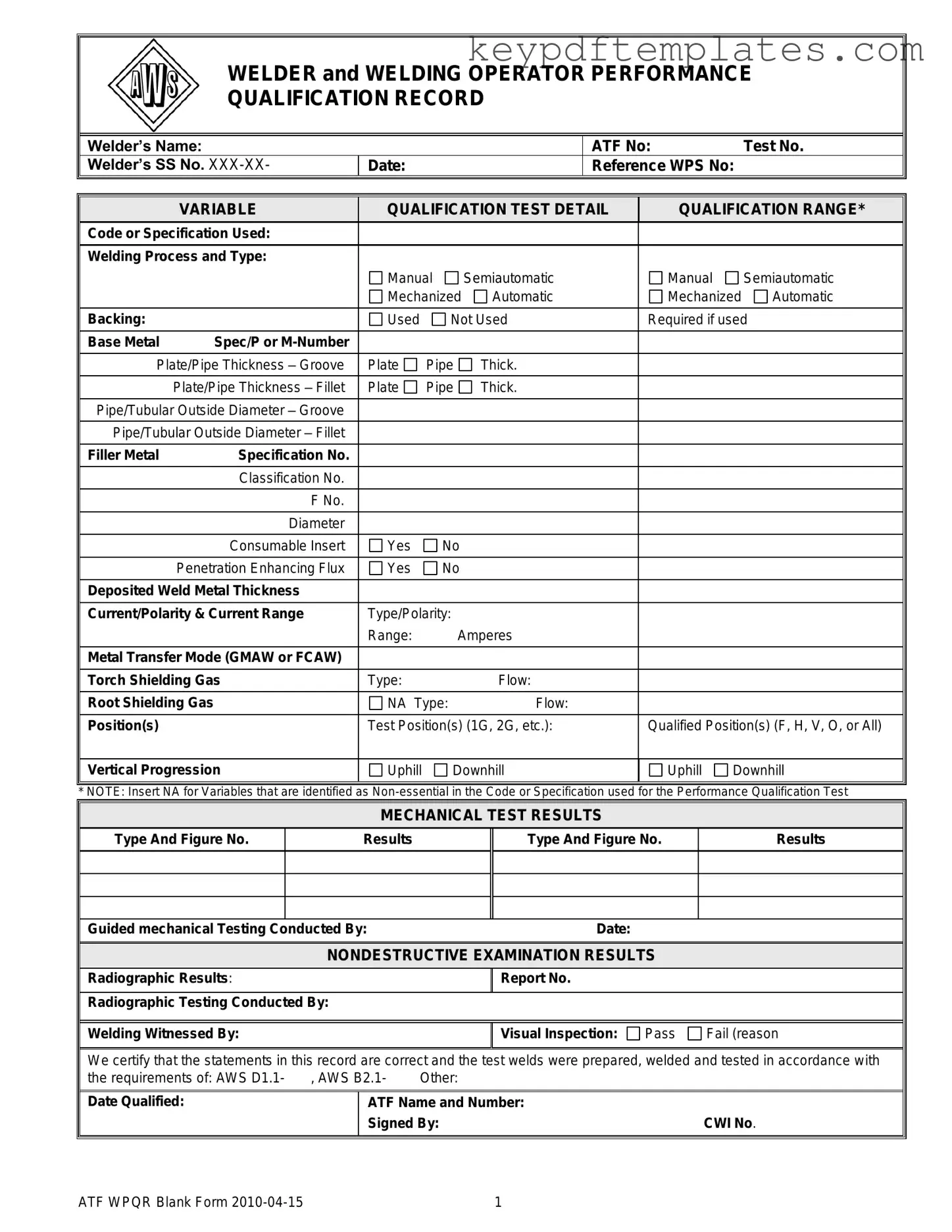Get Welder Performance Qualification Record Form
The Welder Performance Qualification Record form is a vital document that verifies a welder's skills and qualifications in various welding processes. This record captures essential details about the welder, the tests conducted, and the results obtained, ensuring compliance with industry standards. By documenting this information, employers can confidently assess a welder's capabilities and maintain safety and quality in their operations.
Modify Document Online
